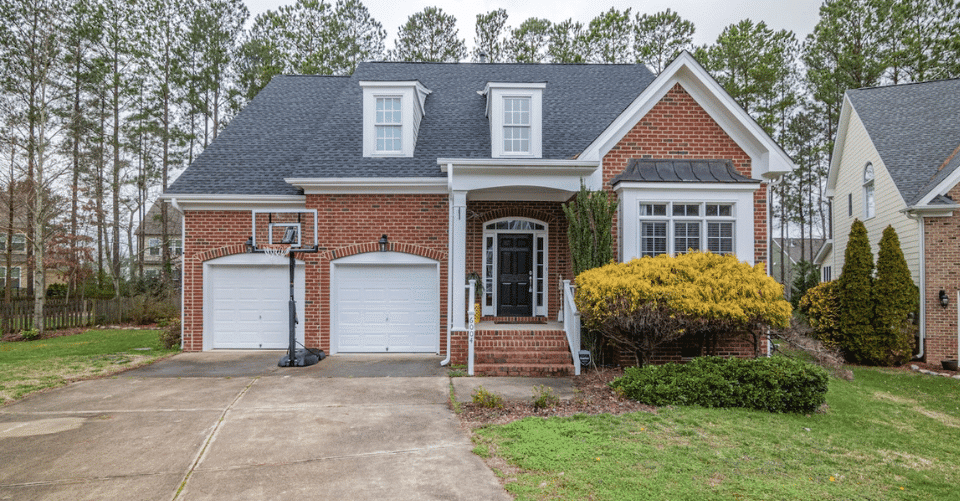Did you know that millennials will take the lion’s share of the U.S property market in the next few years? In 2020 alone, over 50% of home buyers were millennials. More and more people are coming of age, settling down and starting families now than ever before. As such, this is the best time to build your real estate portfolio as an investor.
This guide explains what it takes to build a profitable real estate portfolio. We will focus on using the right data and tools like document parsing technology to create a winning investment strategy. Let’s dive right in!
What is A Real Estate Portfolio?
A real estate portfolio is simply a collection of property assets owned by an individual or group. The primary purpose of a real estate portfolio is to earn a sustainable income over time. Every real estate portfolio is unique, but there are essential features that go into it.
These include:
- Your objective for building the portfolio, such as financial freedom or to secure a comfortable retirement
- Your initial capital to secure your properties
- Your investment goals in terms of the months or years you expect returns
- Your risk-versus-reward strategy to protect your investment from market changes
Ultimately, a real estate portfolio is like an investor’s resumé: your collection of properties says a lot about your financial philosophy. For example, one investor may specialize in residential properties, while another may diversify their portfolio to include farms, ranches, commercial properties, low-income residential houses, and much more.
How to Start A Real Estate Portfolio
The best way to start a real estate portfolio is with research. To support your investment plan, you want to understand the current market conditions, expert forecasts, and marketing strategies.
You should also be familiar with the latest real estate management solutions, from property listing sites to CRMs and lead generation solutions. A well-informed investor is in a great position to secure funding for your investment from all potential sources and grow your portfolio over time.
Here are the key things to consider starting a real estate portfolio from scratch:
1. Your Objective
Start with your end goal: what do you want to get out of your real estate investment portfolio? Do you want passive income over the long term, or do you prefer short-term returns? Your combination of properties will impact your bottom line, even if some properties appreciate while others depreciate.
This is the nature of the investment, which is why you should know what you’re willing to risk in this venture. For example, rental properties carry less risk, but they take longer to raise a return. Rehab properties, on the other hand, offer quicker payback with higher risk.
2. Numerical Metrics
First, understand the actual numbers like your buying and selling price, associated transaction costs, repair costs and profit margin. These offer a bird’s eye view of your real estate investment portfolio.
Next, comes the analytical metrics, such as cash-on-cash returns (CoC), operating expense ratio (OER), internal rate of return (IRR), and much more. These give you a detailed look at how each of your properties performs. Not all metrics are created equal, so evaluate which numbers are best for your investment strategy.
3. Upfront Financing
Real estate investors mostly get their financing from institutions like banks and mortgage providers. However, private lenders can invest in your portfolio too. Your portfolio must have clear and ready answers to win your lenders wherever your funds come from. Know your lead generation strategy to attract tenants or buyers and the projected ROI on each property.
4. Recurring Expenses
Each unit of real estate on your portfolio comes with associated costs. For example, you may incur improvement costs for a rehab property. Therefore, your portfolio should include the after-repair value (ARV) for fix-and-flip investments.
You’ll also incur net operating costs like insurance, utilities and property taxes. These financial figures must be accurate and up-to-date when pitching to your potential lenders.
5. Asset Allocation
Asset allocation is an investment strategy that balances your potential risk and returns. Each property on your real estate portfolio has a given risk/return value and it all depends on:
- Location: Consider the property’s proximity to amenities, green spaces, markets, transport hubs and freeways. Also, check with the local zoning and urban planning office to know how the area may develop in the future.
- Property Type: Residential properties like apartments, townhouses, and condos have different risks/returns. The same goes for commercial properties, such as warehouses, industrial facilities and office buildings.
- Investment type: These are either debt (banks and mortgage lending institutions) or equity (you own part of the property and gain returns upon its sale).
Note: Your asset allocation links directly to diversifying your property portfolio—the more diverse your assets, the better your chances of investment success.
6. Management
When you start your real estate portfolio, you’ll have two choices: either hire a property management firm, or become a landlord and handle the property management yourself. The options are yours, but remember that a property management firm brings additional costs to your portfolio, affecting your bottom line.
One great solution is Zillow Rental Manager for rental properties on your portfolio. Once you have this solution, you can manage your investment by:
- Listing the properties for rent or sale
- Screening tenants
- Collecting rent
Zillow Rental Manager also comes as a smartphone app to manage your property anywhere. The app is a go-to solution for beginners in real estate portfolio management.
Benefits of Building A Real Estate Portfolio
So far, you’ve learned how to start a real estate portfolio. Let’s look at why it’s a good idea in the first place, and what you stand to gain. Building a real estate portfolio comes with a pack of benefits. Some perks could be purely financial-based but other advantages come in the form of cushioning you against sky-high taxes. Still, the main benefits of building a real estate investment portfolio include:

1. Build Passive Income
Passive income means that you don’t have to be actively involved in making money. However, note that your real estate portfolio income is what remains after the mortgage payments and operating costs. This cash flow can only grow over time: rental income remains steady and likely to increase long-term.
2. Hedge Against Inflation
Every investor faces the risk of inflation on their assets. Inflation means that your investment loses value: if your asset appreciates by 5% annually, but the inflation rate is 6% annually, your return will be -1%, so you’ll be making losses on your investment.
That said, a real estate portfolio can protect you from the effects of inflation. The real estate market in general is linked to GDP and market demand. Whether the economy grows or shrinks, rental prices almost always go up. Here, your tenants shoulder the inflation risk, keeping your investment profitable.
3. Tax Benefits
Tax deductions for rental properties include property taxes and insurance, ongoing maintenance, mortgage payments and hiring independent contractors. You can also write off other expenses like advertising, business equipment and travel fees if your portfolio is a limited liability company (LLC). These tax benefits can save you plenty when you pay your annual income tax.
At the same time, there are capital gains to be made when you sell your property for profit. Long-term capital gains are tax-free if your income level is 0%, but only if you sell your investment property after the first year of ownership.
Real estate investors can also take full advantage of government-backed incentives like the 1031 exchange to defer their taxes, invest in opportunity zones to grow their capital gains or even defer all taxes after ten years.
Do your research about different ways to enjoy your real estate portfolio tax benefits. Even better, have a qualified CPA on your investment team to develop a tax strategy for your portfolio.
How to Grow Your Real Estate Portfolio
It’s one thing to start a real estate portfolio, but it’s another thing to make sure it grows and remains profitable. This is where most real estate investors struggle, with many having just one property in addition to their primary residence.
But according to Redfin, real estate investors bought a record 18.4% of homes in the U.S. by the end of 2021. It is therefore possible to jump into the market and grow your real estate portfolio, even with less-than-ideal capital.
1. Leverage Your Portfolio
Leverage is a critical part of real estate investing because it helps you secure funds to buy more property. If you don’t have ready cash to spend on an ideal property or want to use less of your income for this, leverage allows you to use other people’s money instead. The most common route is to secure a loan from an institutional lender against the value of your property.
You could also get a second mortgage using your home equity, which typically comes as a lump sum payment. Or you could opt for a home equity line of credit (HELOC) which works more like a credit card: you can borrow as much as you need and repay at a lower interest rate.
These are just a few avenues to get funds to grow your real estate portfolio. Of course, there’s always a risk of over-leveraging if property values drop. The result is an underwater mortgage, which is essentially a loan that’s more than your property’s current value. Keep your leverage at about 20-25% of your equity to prevent going underwater.
2. Diversify To Reduce Risk
The concept behind diversifying your real estate portfolio is not putting all your eggs in one basket. For example, if all your properties are in your local area and a hurricane comes through, they’d all be affected and your portfolio would take a serious hit.
Own different properties in different markets, just in case one market dips or demand fluctuates.
Some popular ways to diversify to reduce risk include:
- Fix-and-flipping: Buy a property that needs repair, renovate it, and sell it for profit. The idea is that you acquire the property at a lower price because of its condition and sell it at a higher price to recoup your repair costs plus a little extra. Keep your repair costs at 30% of your buying price and your estimated after repair value at 30% above your repair costs to protect your investment.
- Snowballing: Begin with one property on your portfolio, and save the income it generates over time. Use this income to buy another property, and rinse and repeat. This is a self-sustaining method to diversify your real estate portfolio, but it’s a long-term investment strategy.
- BRRRR: Buy, Rehabilitate, Rent, Refinance, and Repeat. If you don’t have enough upfront cash for your real estate portfolio, the BRRRR method helps you take the next step. As your BRRRR property gains in equity over time, you can refinance and use that money to buy another property.
3. Grow Your Team
A real estate portfolio with one property is easy to manage–you can be a landlord alongside your day job or other commitments. But as soon as you add on another asset, it makes more sense to get help from management.
Here are some key people that can help you grow your real estate portfolio:
- A general contractor: You need someone you can trust for everything maintenance-related, from minor fixes to complete property remodeling. This is your go-to for electrical work, plumbing and HVAC for all your properties in your portfolio.
- An accountant: While it’s wise to invest in multiple locations, each area brings a range of tax laws that may affect your bottom line. A certified public accountant (CPA) will take the headache out of tax requirements, balance your books, and keep up with changes in the real estate market.
- An attorney: You need a trustworthy attorney who knows the ins and outs of real estate contracts and local and state laws. It’s beneficial when negotiating terms with lenders and tenants.
- A property manager: Hand over the everyday landlord tasks to a real estate property manager. These include finding tenants, preparing lease agreements, collecting rent, handling tenant complaints, and much more.
Note: These team members will attract additional costs to your real estate portfolio, but they’re well worth it as you grow your investments.
Quality Lead Generation and Automation with Parserr
One more part of building a real estate portfolio is the sheer volume of data you handle daily. As soon as you enter the marketplace with a property for sale or rent, your email inbox will be full of customer inquiries, listing updates, agent pitches, and much more.
You’ll also be sending emails to your tenants and potential sellers when you’re ready to grow your portfolio. This brings us to the need for email parsing software like Parserr.
Using Parserr in your real estate toolkit, you can:
- Grab important data from every incoming email, such as sender names, locations, phone numbers and more
- Extract data from the attached PDF, Word and Excel documents
- Manage leads from your email to your CRM
- Save time and money by eliminating manual data entry.
Parserr can help you to accelerate your real estate investment strategy through automation. All it takes is one easy setup to organize your real estate email inbox. To learn more about how Parserr integrates with your real estate portfolio, get in touch with us today.










